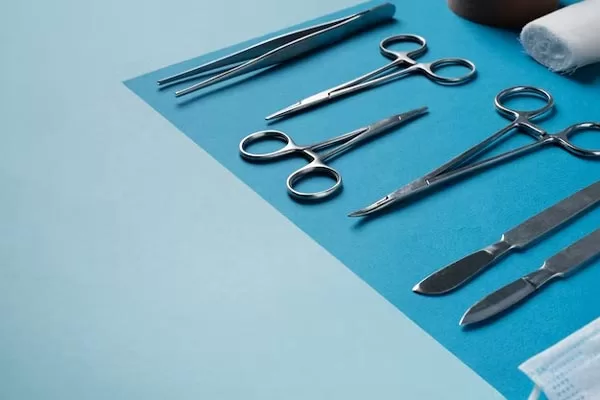The medical industry demands accuracy, precision, and reliability in product prototyping and development to ensure product quality and efficacy.
CNC machining is a popular choice for rapid prototyping and production in the medical device sector. The technology’s ability to cut complex, high-quality parts make it an essential component of any manufacturing project.
This post unpacks the benefits of CNC machining for designing medical tools and products. We’ll discuss how CNC-machined medical parts improve the safety and quality of medical devices and how the technology complies with industry standards and regulations.
CNC Machining Explained
This manufacturing process relies on digitally-controlled machines to cut complex and precise parts from materials like steel or aluminium, used to create mold tooling for medical products.
CNC technology, or “Computer Numerical Control,” refers to using software to control operations and movements of machine tools.
The CNC machining of medical parts offers advantages over traditional methods. Manufacturers benefit from increased productivity, higher accuracy, and quick turnaround in production.
These advantages make CNC machining the ideal process for manufacturing medical equipment where there is a demand for accuracy and precision.
CNC machining can cut complex features and shapes into materials that are otherwise impossible with other production methods.
What Is Medical Device CNC Machining & How Does It Work?
Designing and producing medical equipment with CNC machines involves a few steps. The process starts with a CAD drawing of the finished design.
A technician transfers the drawing to the CNC machine, which runs the CAD software, using the files to create a 3D image of the finished product.
The machine uses cutting tools like mills, drills, and lathes to shape the material into the finished design.
The CNC machining process is automated, allowing precision work with fine tolerances. The result is a finished device prototype with a flawless design.
What are the Advantages of Medical CNC Machining?
There are several advantages to using CNC machining processes in medical products and part design. Compared to traditional manufacturing methods, CNC machining offers designers and manufacturers higher precision and accuracy in finished products and parts.
Here are a few reasons to consider CNC machining for your medical device prototyping process.
- Excellent accuracy and high precision in cutting complex designs.
- Higher productivity levels and increased efficiency due to automated use.
- Repeatable consistency and reliability for unmatched product quality.
- Suitable for use with various materials, from plastics to tool steel.
- Ability to customize batch size for prototyping and mass production.
- Enhanced surface texture and finish options.
The benefits of CNC machining for medical devices and parts make it suitable for various products and applications.

CNC medical scalpels
Common CNC Machined Medical Parts
CNC machined parts are all over the medical industry in applications you’ve probably never heard of. These spares are commonly found in clinics, hospitals, and other medical facilities around the globe.
CNC-machined medical parts save manufacturers and patients time and money while improving patient outcomes and offering a high level of product quality control, unlike any other manufacturing process.
CNC medical machining produces complex and intricate parts, including electronics and hardware components for medical devices. There are CNC machined parts on thousands of medical products, from monitoring equipment to prosthetics.
Some of the more common medical products produced using CNC matching methods include the following.
- Clamps
- Scalpels
- Forceps
- Scissors
- Plate Benders
Routine CNC Machine Maintenance & Part Replacement Parts
Because of the high level of precision in CNC machined medical parts, these machines require regular cleaning and maintenance to ensure they remain in working order.
Regular part replacement and maintenance duties on CNC machines prevent breakdown issues, prolong the equipment’s service life, and reduce manufacturing downtime.
It’s essential for all technicians to clean and lubricate the machine regularly. These maintenance duties slow the wear and tear on the device and reduce contamination risk in the production process.
Technicians must replace all worn components in the CNC machine as necessary. It’s common for parts like spindles, cutting tools, and servo drives to require replacement from time to time. Maintaining the CNC machine ensures it stays accurate and prevents errors or defects in the final product.
CNC machines must comply with all industry regulations and standards surrounding the use of the tools. For instance, machinists and manufacturers must comply with ISO 13485 standards and regulations set by the FDA.
Ensuring regular replacement of warm parts and optimal maintenance strategies for the CNC machine reduces the risk of non-compliance and legal issues.
If manufacturers or technicians neglect their maintenance duties, they could experience a costly breakdown that was avoidable and preventable. This increases the risk of workplace hazards, downtime, and expensive repairs.
All CNC machines producing medical equipment must undergo periodic, planned preventative maintenance strategies to ensure optimal equipment operation. Technicians must inspect and replace parts as required.
Provided the technician maintains the machine to its service schedule, they should receive a long service life from the device.
